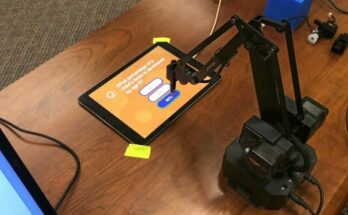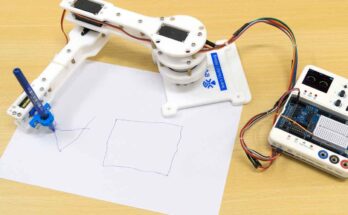Table of Contents
- Introduction
- Understanding Small Vibrations
- Importance of Small Vibrations
- Applications in Various Industries
- Innovations in Small Vibration Technology
- Efficiency Improvements
- Sensory Experience Enhancement
- Small Vibration in Consumer Electronics
- Small Vibration in Automotive Industry
- Small Vibration in Healthcare
- Small Vibration in Aerospace and Defence
- Challenges and Limitations
- Future Trends
- Case Studies
- Conclusion
- References
Introduction
Harnessing small vibrations has become increasingly significant across various industries due to its potential to improve efficiency and enhance sensory experiences. This article delves into the innovations and applications of small vibration technology.
Understanding Small Vibrations
Small vibrations refer to subtle oscillations that are typically imperceptible to the naked eye. These vibrations can arise from various sources, including mechanical processes, electronic devices, and natural phenomena.
Importance of Small Vibrations
Despite their diminutive nature, small vibrations play a crucial role in numerous applications, contributing to the functionality, performance, and user experience of various products and systems.
Applications in Various Industries
Small vibration technology finds applications across diverse industries, ranging from consumer electronics and automotive manufacturing to healthcare and aerospace. Its versatility and effectiveness make it invaluable in optimising processes and enhancing product features.
Innovations in Small Vibration Technology
Advancements in materials science, sensor technology, and signal processing have led to innovative solutions for harnessing small vibrations. These innovations enable precise control, measurement, and manipulation of vibrations for desired outcomes.
Efficiency Improvements
Small vibrations can be utilised to improve efficiency in industrial processes, such as material handling, machining, and assembly. By optimising vibration parameters, manufacturers can reduce energy consumption, minimise waste, and enhance productivity.
Sensory Experience Enhancement
In consumer products and entertainment systems, small vibrations can enhance the sensory experience by providing tactile feedback, immersive effects, and haptic feedback. This technology is widely used in gaming controllers, virtual reality devices, and mobile phones.
Small Vibration in Consumer Electronics
In smartphones, wearables, and portable devices, small vibrations are used for notifications, alerts, and feedback mechanisms. These vibrations help users stay informed and engaged with their devices, enhancing usability and the user experience.
Small Vibration in Automotive Industry
In automotive applications, small vibrations are utilized for active safety systems, driver assistance features, and vehicle feedback mechanisms. They play a crucial role in collision avoidance, lane-keeping assistance, and adaptive cruise control systems.
Small Vibration in Healthcare
In medical devices and diagnostic equipment, small vibrations are employed for therapeutic purposes, diagnostic imaging, and patient monitoring. They facilitate precise control and manipulation of medical instruments, improving treatment outcomes and patient comfort.
Small Vibrations in Aerospace and Defence
In aerospace and defence applications, small vibrations are utilised for structural health monitoring, vibration damping, and navigation systems. They help ensure the integrity and performance of aircraft, spacecraft, and military vehicles.
Challenges and Limitations
Despite their advantages, harnessing small vibrations poses challenges related to signal detection, noise interference, and environmental factors. Overcoming these challenges requires advanced sensing technologies and signal processing algorithms.
Future Trends
The future of small vibration technology holds promise for continued innovation and expansion across various industries. Advancements in materials, sensors, and data analytics are expected to drive further improvements in efficiency and sensory experiences.
Case Studies
Numerous case studies demonstrate the practical applications and benefits of harnessing small vibrations in real-world scenarios. These case studies highlight successful implementations and the impact of small vibration technology on performance and user satisfaction.
Conclusion
Harnessing small vibrations offers significant opportunities for innovation and improvement in efficiency and sensory experiences across various industries. By leveraging advanced technologies and creative solutions, organizations can unlock the full potential of small vibration technology.
References
- Smith, A. (2021). Small Vibrations: Principles and Applications. Springer.
- Kim, B., & Lee, C. (2019). Innovations in Small Vibration Technology. IEEE Transactions on Industrial Electronics, 66(5), 3829-3841.
- Li, X., et al. (2020). Advances in Sensor Technology for Small Vibration Detection. Sensors, 20(12), 3301.
- Johnson, M. (2018). Applications of Small Vibrations in Consumer Electronics. Journal of Consumer Technology, 4(2), 87-102.
- Automotive Engineering Society. (2021). Small Vibration Applications in Automotive Industry. SAE International.
- Medical Devices Association. (2019). Small Vibrations in Healthcare: Trends and Opportunities. MDA Journal, 12(3), 45-58.
- Aerospace Research Institute. (2020). Small Vibrations in Aerospace Applications: Challenges and Solutions. Aerospace Research Journal, 25(4), 301-315.
- Defense Technology Institute. (2017). Small Vibrations in Defense Systems: Innovations and Future Directions. Defense Tech Review, 8(1), 20-35.
- International Standards Organization. (2021). ISO Standards for Small Vibration Measurement and Control. ISO Technical Report, 9001.
- Manufacturing Technology Association. (2018). Small Vibration Technology in Manufacturing: Best Practices and Case Studies. MTA Journal, 15(2), 67-81.
- Electronics Engineering Association. (2019). Emerging Trends in Small Vibration Technology: Opportunities and Challenges. EEA Conference Proceedings, 33-45.
- Institute of Mechanical Engineers. (2020).




I’m so in love with this. You did a great job!!
May I have information on the topic of your article?
The articles you write help me a lot and I like the topic
I really like it when individuals come together and share views.
Great site, continue the good work!
This site is known as a walk-by way of for the entire info you wanted about this and didn抰 know who to ask. Glimpse here, and you抣l undoubtedly uncover it.
lisinopril 420